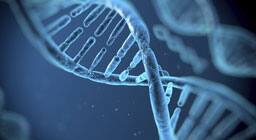New York: Researchers have devised a way to analyse genome sequences in what could help physicians map the risk of various afflictions, including cancer and autism.
The new method, called Scalpel, can pinpoint so-called insertion and deletion mutations (known as "indels") in genomes of people with diseases such as autism, obsessive-compulsive disorder and Tourette syndrome, the findings showed.
"These indels are like very fine cuts to the genome - places where DNA is inserted or deleted - and Scalpel provides us with a computational lens to zoom in and see precisely where the cuts occur," said Mike Schatz, a quantitative biologist from Cold Spring Harbor Laboratory in the US.
With three billion letters in the human genome, it seems hard to believe that adding a DNA base here or removing a DNA base there could have much of an effect on our health.
In fact, such insertions and deletions can dramatically alter biological functions, leading to diseases from autism to cancer. Still, it is has been difficult to detect these mutations.
The new method called Scalpel begins by grouping together all of the sequences from a given genomic region.
Scalpel - a computer formula, or algorithm - then creates a new sequence alignment for that area, much like piecing together parts of a puzzle.
Such information is critical to understand the mutations that cause disease.
The findings appeared in the journal Nature Methods.
















